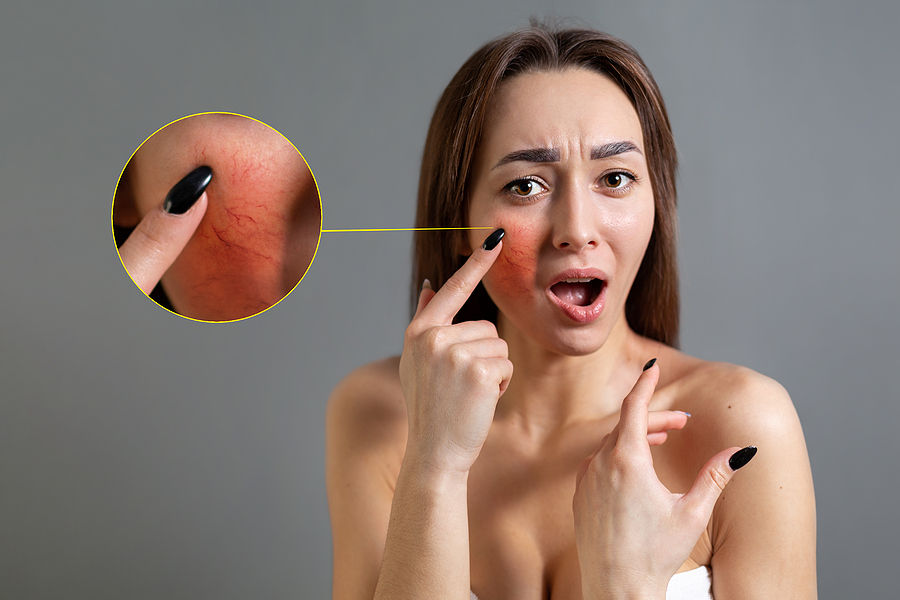- Lupus symptoms and diagnosis
- Focus on feeling better
Lupus is a disease that has proven in the past to be quite difficult to identify and control. Lupus is an autoimmune disease which causes chronic extensive inflammation. There are a number of types of lupus, with systemic lupus erythematosus (SLE) being the most common form, The treatment for Lupus is based on each patient’s own unique case and needs. There are no standard treatment protocols, much is dependent on the symptom composite.
The word lupus means “wolf” in Latin, and erythema is a Greek word for “blush.” Often lupus is distinguished by a noticeable rash on the face. It is thought that the name may have originated from a physician who thought it looked like a wolf bite or wolf fur or at least, that is the general story! Today the rash on the face is better recognized as a “butterfly rash,” as it spreads over the nose, on both sides of the cheeks in the form of a butterfly. The types of the disease can vary from just the skin rash to a much more severe condition which involves a systemic inflammation that can damage major organs, most often the kidneys or lungs.
While I was in school, we saw a number of women with lupus in the hospital, and their cases were quite severe. Many required organ transplants or were dying from the disease. However the good news is while the frequency of milder stages of the disease has increased significantly (its unclear why), the later stages have decreased. For so many lupus patients, the symptoms of lupus can be uncomfortable, but manageable.
In the US, roughly 80–90% of lupus cases are women, making lupus about eight times more common in women than in men. Certain ethnic groups are more subject toward it, and rates of lupus can differ depending on where you live as well. The precise causes of lupus are still a mystery for practitioners, though at least two dozen genes have been discovered which may contribute to the disease, as do many environmental factors. It is an autoimmune disorder so we do know that there are multiple factors that contribute to the issue.
Lupus symptoms and diagnosis as noted by the Lupus Foundation of America
The symptoms are not the same in every person with lupus, and one of the most distressing and frustrating aspects of lupus is that since the early symptoms can appear “mild” to a doctor or healthcare practitioner, women with lupus are frequently labeled as “chronic complainers”. This is unfortunate and due to this these patients are allowed to get sicker before they get their diagnosis. As a practitioner I always shake my head at this— not only because women aren’t being taken seriously enough by their doctors, despite the fact that they have a legitimate illness that can be treated Not listening to a patient’s concerns can have a dangerous outcome and. it just doesn’t have to be this way.
The main problem is there is no simple diagnostic test for lupus. To be given an official diagnosis of lupus, you have to have 4 of these 11 criteria.
- Malar rash – a rash over the cheeks and nose, often in the shape of a butterfly
- Discoid rash – a rash that appears on your body as red, raised, disk-shaped patches
- Photosensitivity – a reaction to sun or light that causes a skin rash to appear or get worse
- Oral ulcers – sores appearing in the mouth
- Arthritis – joint pain and swelling of two or more joints in which the bones around the joints do not become destroyed
- Serositis – inflammation of the lining around the lungs (pleuritis) or inflammation of the lining around the heart that causes chest pain which is worse with deep breathing (pericarditis)
- Kidney disorder – persistent protein or cellular casts in the urine
- Neurological disorder – seizures or psychosis
- Blood disorder – anemia (low red blood cell count), leukopenia (low white blood cell count), lymphopenia (low level of specific white blood cells), or thrombocytopenia (low platelet count)
- Immunologic disorder –anti-DNA or anti-Sm or positive antiphospholipid antibodies
Abnormal antinuclear antibody
There are numerous blood tests that you can get, the bad news is many of the tests may come back as “normal”, even when you know you are not feeling well this is one reason lupus is often misdiagnosed. However, it is important to get the tests to know where you stand at that moment, and to rule out other problems.
At Women to Women, we highly advise that every woman with lupus or who are beginning menopause to be their own best health advocate. You can start by interviewing different healthcare professionals. Keep a journal of your symptoms, instead of trying to remember everything and bring it with you to your appointments. Then be as precise as possible, and include the frequency, severity and/or dates on which you have flare ups or when symptoms appeared. With this to guide you, your provider and you can both begin a course of action to find the right path for the management of your symptoms or flare-ups, and return your body to a more natural, balanced state.
Focus on feeling better
If I could say just one thing to a woman recently diagnosed with lupus, it’s this: take a minute and set aside the fear and concern about the diagnosis itself. Focus on reducing inflammation, and managing your symptoms inch by inch, or one at a time. Through treating each minor issue, you can achieve the broader, more complete balance to your life again.
An inflammatory imbalance is like a fire in a hearth that hasn’t been watched and is starting to burn down the house. It roars past its original boundaries in the body and, if we don’t intervene, starts to impact all our major systems, including the endocrine, digestive, cardiovascular, respiratory, lymph, and central nervous systems. In time it can contribute to a whole host of conditions, some serious, from heart attack to ulcers to multiple sclerosis to cancer—as well as the accumulation of toxic weight. And it all starts with an overburdened immune system that’s just trying to do its job. Women can manage their symptoms and prevent flare-ups by controlling inflammation and for this, there are several natural strategies to try – read more about lupus in my other articles.
Try to step away from the word “diagnosis” for a moment, just in the same way women at midlife can step away from the word “menopause.” As an alternative, take a few moments and look at your symptoms as separate from any designated condition if you can. As we examine our symptoms instead of the diagnosis, then we can figure out what we need to do to relieve those symptoms— whether it’s detoxification, soothing digestive imbalance, or above all quieting inflammation, when we address any of these factors (or all!) it will help you start to feel the relief you need. For the reason that in the end, it doesn’t matter whether you’re a “wolf” or a “butterfly” — what really matters is that you feel better! Functional medicine looks at the symptoms and begins to unravel the actual causes and they can be many. That is why the symptoms vary so much and that is why the relief can come from understand the actual causes and treating them.
Types of lupus
- Systemic lupus erythematosus (SLE)
- Discoid lupus erythematosus (DLE)
- SCLE
- Drug-induced lupus
- Neonatal lupus
For more information on the similarities and differences between types of lupus, visit the Lupus Foundation of America website.








